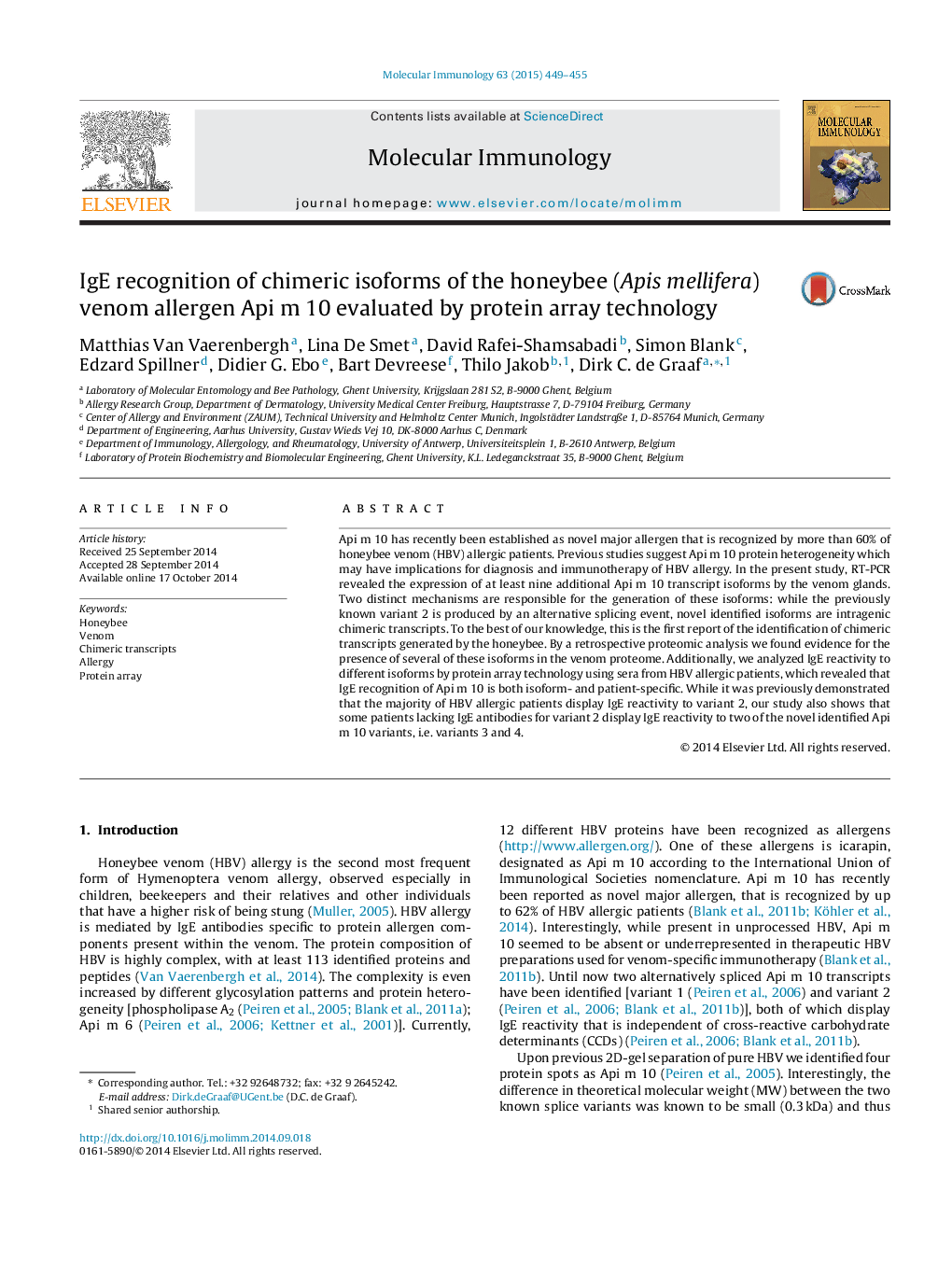| Article ID | Journal | Published Year | Pages | File Type |
|---|---|---|---|---|
| 2830731 | Molecular Immunology | 2015 | 7 Pages |
•Nine additional Api m 10 transcript isoforms are discovered.•The previously known variant 2 is produced by an alternative splicing event.•Novel identified isoforms are intragenic chimeric transcripts.•IgE recognition of Api m 10 is both isoform- and patient-specific.
Api m 10 has recently been established as novel major allergen that is recognized by more than 60% of honeybee venom (HBV) allergic patients. Previous studies suggest Api m 10 protein heterogeneity which may have implications for diagnosis and immunotherapy of HBV allergy. In the present study, RT-PCR revealed the expression of at least nine additional Api m 10 transcript isoforms by the venom glands. Two distinct mechanisms are responsible for the generation of these isoforms: while the previously known variant 2 is produced by an alternative splicing event, novel identified isoforms are intragenic chimeric transcripts. To the best of our knowledge, this is the first report of the identification of chimeric transcripts generated by the honeybee. By a retrospective proteomic analysis we found evidence for the presence of several of these isoforms in the venom proteome. Additionally, we analyzed IgE reactivity to different isoforms by protein array technology using sera from HBV allergic patients, which revealed that IgE recognition of Api m 10 is both isoform- and patient-specific. While it was previously demonstrated that the majority of HBV allergic patients display IgE reactivity to variant 2, our study also shows that some patients lacking IgE antibodies for variant 2 display IgE reactivity to two of the novel identified Api m 10 variants, i.e. variants 3 and 4.
